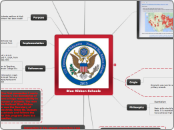
Blue Ribbon Schools
Video from the Secretarty of Education about Blue Ribbon Schools!
Blue Ribbon School Map 2013

Origin
Founded in 1982 by Secretary of Education Terell H. Bell. To recognize schools where students thrive to address a Nation at Risk in it's education. Important Dates:
Originally was just for secondary schools and later exanded to primary schools.
2003: Program was restructured to fit the No Child Left Behind Law placing strong emphasis on state assessment and academic success.
2012: was renamed the National Blue Ribbon Schools program instead of Blue Ribbon Schools
Philosophy
Essentialism
Basic skills should be acquired by all through time proven tests. It is essentialism due to its rewarding of schools that have achieved high scores on these basic skills.
Connection 3:The last connection I see is through the Core Curriculum. The Core Curriculum surrounds itself on the basic skills such as math, reading, science, and social studies. A strong core curriculum is likely to yield better test results. The National Blue Ribbon School program recognizes these schools that are able to achieve the basic skills in their core curriculum as shown on their state tests.

Only a few kids/school the blue ribbon has impacted!
Purpose
To recognize U.S schools where students perform at high levels or where significant improvement has been made!
Implementation
With over 25 years of exsisting the Blue Ribbon Schools has been granted over 5,600 times and over 5,200 schools from grades K-12.
References
National Blue Ribbon Schools Program. (n.d.). In U.S Depeartment of Educatin. Retrieved February 7, 2014, from http://www2.ed.gov/programs/nclbbrs/index.html
Kauchak, D., & Eggen, P. (2013). Introduction to Teaching Becoming a Professional (5th ed.). N.p.: Pearson College Div.
The National Blue Ribbon Schools for 2013 (interactive map). (2014). In U.S Depeartment of Educatin. Retrieved February 10, 2014, from http://www.nationalblueribbonschools.com/interactive-map-2013-schools/#.UvlXmKtdJD0
